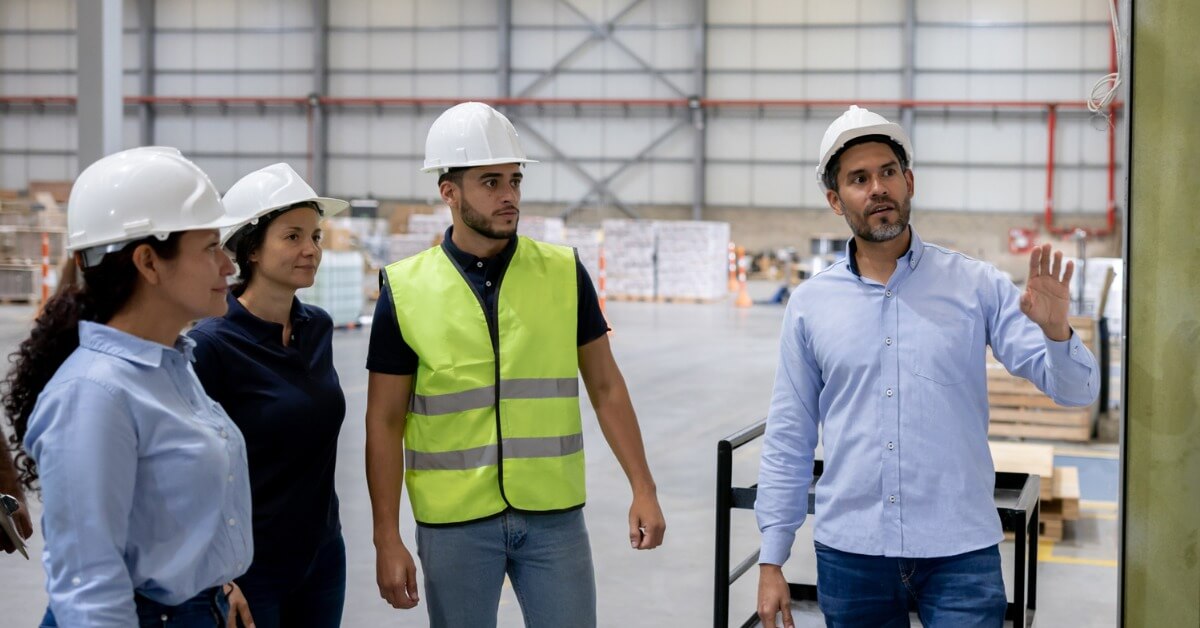Uncovering Blind Spots: Areas Commonly Overlooked by Safety Professionals
Safety professionals have a critical role in ensuring the safety of the workplace and its employees. However, with a multitude of responsibilities, it’s easy for some things to fall off their radar. In this article, we will discuss some of the common things safety professionals tend to overlook or forget and provide practical solutions to help stay on top of them. From managing paperwork to staying up-to-date with training requirements and keeping the workplace clean and tidy, we’ll cover it all.
The first, and most obvious one people forget is paperwork.
If paperwork lives in a box or it’s just a digital file and nobody ever looks at it, then we’re going to forget about it.
A good example could be waste receipts. Are those receipts actually getting filed on-site? How often is your waste getting picked up? And do you have a receipt to match each of those pickups? And if that waste is hazardous waste, are your manifests matched?
Solution:
Paperwork is just really easy to lose track of if we don’t have a process to manage it. Is your process documented?
Another item that tends to get overlooked is the frequent inspections that need to happen on-site.
If you have a forklift, daily inspections are required. If you have an SPCC plan, then tank inspections are going to be needed. If you store hazardous waste on-site, then weekly inspections for waste containers are required. There are just so many inspections for different things and different places, so I know it can get lost in your daily grind. But you’ll need to stay on top of them because this is part of the paperwork that regulators will be asking about.
Solution:
Building reminders into your calendar is an easy way not to forget to complete the task. Recurring calendar tasks are an easy thing to set up in your Outlook or Google Calendar.
You can set this up for yourself or other managers. You can add a task to inspect emergency equipment like your fire extinguishers. Set that recurrence to monthly and then share that calendar invite with other people if they’re also in charge of the inspections.
Pro-tip: if you’re using EHS Software like KPA Flex that has a built-in compliance calendar, this is super easy to schedule out and monitor completion.
Another one that often gets overlooked is training.
It’s important. It’s ongoing. Sometimes we tend to just have a big emphasis on a particular topic with our employees and after you’ve talked about it for so long, we’re tired of talking about it. Then training can only be addressed in cycles.
Regulators will ask about training, so don’t let this one get away from you and how you manage this process.
Solution:
EHS software is an easy solution to help safety professionals manage the required training for employees. Most training content can be available in multiple languages, which is helpful for people to understand what they’re learning. The software can provide reports to you at a glance and also send notifications out for expired training to both employees and their managers.
The last one is housekeeping.
It sounds generic, but it really is the foundation of a great safety program.
Are people paying attention to hazards within their immediate workspace? If they aren’t, housekeeping issues are going to build up. And when things aren’t tidy, it can create slip and trip hazards. It also isn’t a good look.
Both good housekeeping and poor housekeeping spread. If it gets out of control, it’s hard to wrangle it back in. Nobody likes working in a dirty place, and no one wants to waste their time searching for equipment they can’t find because nothing has a home. Having an organized shop is really important to the morale of your employees and the first step in taking some responsibility and pride in where people work.
Solution:
Unfortunately, there’s just not an easy solution for this one. You just gotta stay on top of it. This is where a positive safety program can really have an effect. Rewarding employees for clean and tidy spaces may change how others are going to organize their space and hopefully follow suit.
Some KPA clients have approached this by closing business early once a month to do a shop cleanout. This gives employees paid time to get rid of just unneeded items. You really don’t need 50 cans of the same product.
What can you do to make cleaning out people’s spaces an easy thing to do?
Safety professionals have a lot on their plate, and it’s easy to overlook some essential tasks.
However, by taking a proactive approach and implementing practical solutions, you can keep track of paperwork, inspections, training, and housekeeping, and ensure that your workplace is safe and healthy for everyone. Remember that safety is an ongoing process, and staying vigilant is the key to success. By working together and making safety a top priority, you can create a culture of safety that benefits everyone at your workplace.
Get the Guide: A Data-Driven Guide to Workforce Safety
Learn how to leverage your safety data and analytics to maintain a safe workplace.

